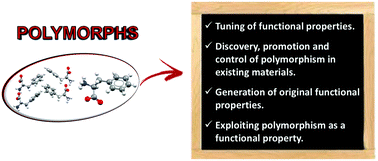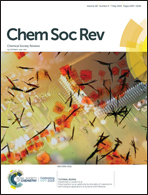Polymorphism as an additional functionality of materials for technological applications at surfaces and interfaces†
Abstract
Polymorphism is a widespread phenomenon occurring in many solid materials having important effects in many scientific disciplines. Since molecular packing can determine the functional properties of materials but is often difficult to control, polymorphism has usually been considered a drawback for technological applications. Thanks to advances in its control over the past few years, polymorphism is now often considered more as an opportunity because it allows a much wider range of functionality in, for example, a solid molecular material, where a corresponding packing type can be selected or even promoted. This tutorial review introduces the reader to the most representative progress in applications of polymorphism as an additional functionality of materials especially in its current promise for technological applications. In addition, it examines the most powerful strategies to control and fully exploit the intrinsic properties of polymorphism and transitions between its various metastable states, through fine-tuning of molecular packing in a reproducible manner. The aim is to create awareness about polymorphism as a novel enabling technology rather than as a problem.



 Please wait while we load your content...
Please wait while we load your content...